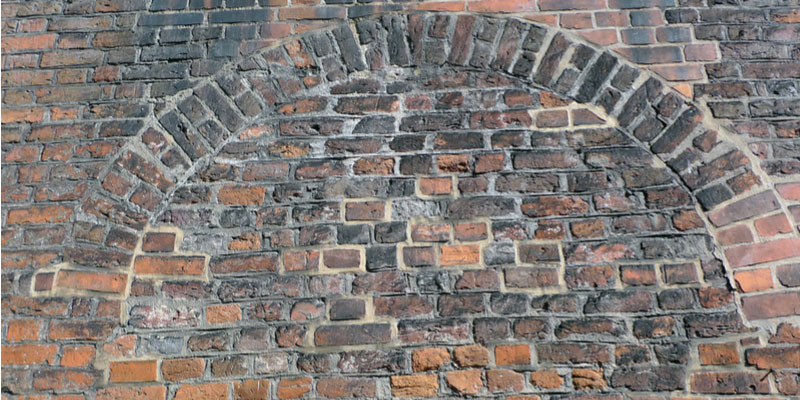Bowing brick wall repair is the only solution to a bowed brick wall. The last thing you want to do is ignore it. A bowed wall can occur to a new or old structure, and for a variety of reasons—mostly related to water damage, unresolved deterioration, and a lack of maintenance. A bowed wall is considered serious if it is more than 2 inches; this is the general number to describe serious structural damage of a wall.
Most brick walls start to bow as a result of taking on too much moisture and expanding from within. This is especially true for clay-fired brick, which tends to expand as it takes on more moisture over time.
Bowing often occurs at the middle of a wall due to simple mechanics. The corners of a brick wall are stiffer than the middle parts of the wall. Therefore, when the wall takes on moisture, it naturally increases in size where it is most flexible… the middle. If a wall is bowed at the parapet level, there are additional concerns such as the wall being exposed to the elements on both sides.
It is not that uncommon for a new brick wall to show signs of bowing. This can be caused by the combination of concrete framing and brick veneer. Concrete shrinks over time, but brick does the opposite—it expands. That’s why it’s so important to use relief joints when combining different materials on the same building.
What Causes a Bowed Brick Wall?
- Lack of repairs, allowing deterioration to set in
- Not keeping up with regular maintenance
- Construction issues, such as not adding relief joints or using two conflicting materials
- Moisture/water damage
What Happens if You Don’t Fix it?
If you don’t make timely repairs to a bowed wall, you’ll notice the problem only gets worse. Additional damages start with cracks in the corners of the wall, and from there bricks will start to fall out of the wall.
How to Repair a Bowed Brick Wall
Each wall is different depending on the extent of the damage. In many cases, the corners are tuck-pointed, and relief joints are added. Adding wall anchors is one of the most commonly used methods of repair, as wall anchors work to stabilize the wall.
Steel channels are used for more severe movement, and involve running a steel bracket between floor joists, and anchoring steel beams to the foundation footing.
The least invasive option involves the use of carbon fiber strips that can be added to the wall to provide support and resistance to the pressure. As a result, the wall will not continue to bow more.
Is it Ever Too Late to Fix a Bowing Brick Wall?
If the bricks are spalling, it might be too late to repair the wall effectively. Once the damage is too bad, the entire wall must be taken down and rebuilt. Therefore, it’s important to catch a bowed wall early on.
The Importance of Experienced Mason Professionals
To make sure repairs are effective it is important to hire a licensed mason with proven experience working with brick wall foundations. There are different methods used to repair a brick wall, and the level of bowing or bulging should always help determine the best method of repair. It’s equally important to know when to stop trying to fix a brick wall, and realize it simply needs to be replaced. Working with honest experts in this area will offer many beneficial insights. Contact us today to set up a consultation and get a quote.

